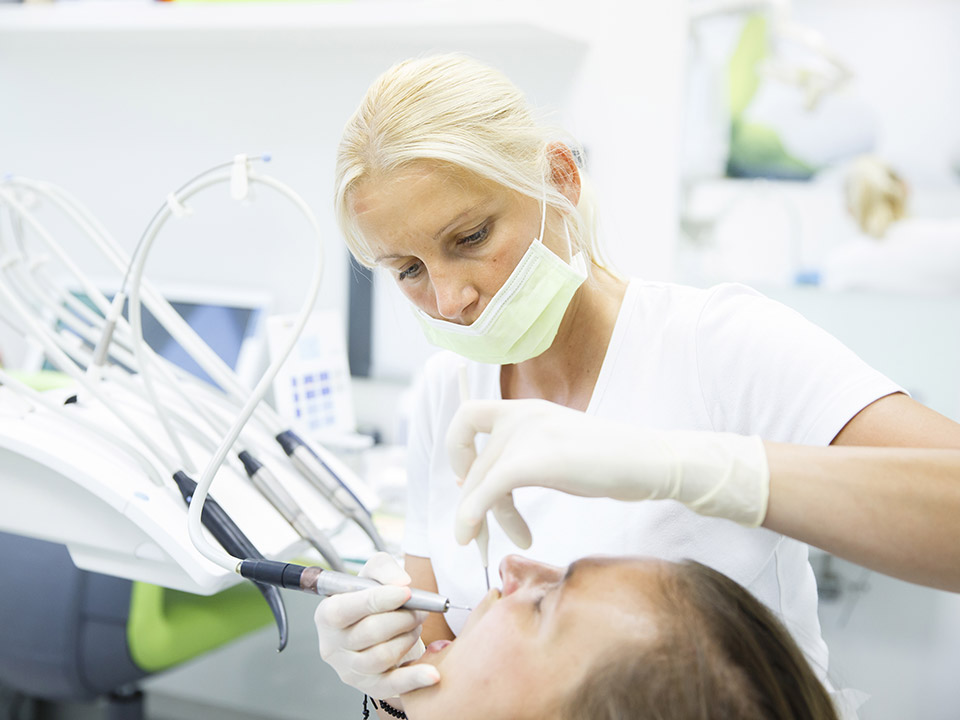If your tooth becomes infected, you’ll need to treat it before it worsens. Depending on where the infection is in the tooth, a root canal may be necessary, but that might not always be the case. A tooth extraction can be used as an emergency procedure if there is no other way of saving the tooth.
If the problem is in the pulp, the root canal procedure will not help; you’ll need to have the tooth removed. If the problem is outside of the pulp, however, it may be possible for your dentist to save your tooth by performing a root canal.
Read on to learn the difference between a root canal and tooth extraction and which is best suited for your tooth condition.
What is a Root Canal?
A root canal is a dental procedure that involves removing infected or damaged tissue inside the tooth. Infection or damage can occur in the pulp or the root canal system. The infected tissue is replaced with filling material called gutta-percha. An infection in the pulp of the tooth can be caused by deep decay, cracks in the tooth, or trauma.
The purpose of root canal therapy is to remove decay and infection from the inside of a tooth. The pulp chamber is cleaned and shaped to fit over a specially-made crown.
If you have any signs of infection, such as pain, swelling, discoloured gums, or loss of feeling in your teeth, mouth, or jaw, visit a dentist to determine if you need treatment for your root canal.
Risks Associated With Root Canal Therapy
The common risks associated with root canal therapy are:
Infection. The success rate for root canal therapy is high, but there’s still a chance that you could experience an infection after the procedure. Infections can cause swelling, pain and tenderness in the area where your tooth was treated. Contact your dentist if you experience these symptoms after your root canal treatment.
Sensitivity. A small number of people who have had a root canal experience sensitivity to hot and cold foods and drinks. The sensitivity usually goes away in 3 to 6 months.
Temporary Numbness: It is possible to feel temporary numbness or weakness of the tongue or lip muscles after treatment. This is common when undergoing root canal therapy, but it should go away shortly after treatment.
Root Canal Aftercare
Root canal aftercare is essential to the root canal procedure. If you don’t care for your tooth, it can become infected.
What To Expect After A Root Canal
After undergoing this procedure, you may feel pain or discomfort in the tooth for several days. You may also feel discomfort when biting down on the treated tooth. The amount of pain depends on how much nerve tissue was removed during the procedure.
The recovery period after a root canal is short. You can go about your daily life, but you should follow dentist rules to ensure the healing process goes smoothly.
The Do’s And Don’ts For Root Canal Aftercare
Do’s
- Drink plenty of water.
- Eat a healthy diet consisting of fruits and vegetables, whole grains, lean protein, and dairy products.
- Maintain a regular schedule for brushing your teeth twice daily with a soft-bristled brush and fluoride toothpaste.
- Take pain medication as prescribed by your dentist.
- Visit your dentist regularly for professional cleanings and checkups.
Don’ts
- Don’t drink alcohol, smoke, or use tobacco products
- Don’t rinse with mouthwash containing alcohol. It can irritate the sensitive area.
What is Tooth Extraction?
A tooth extraction, also called exodontia, is the removal of one or more teeth from the dental alveolus (socket) in the alveolar bone. Some of the reasons that can necessitate tooth extraction include injury or disease affecting the structure of the tooth or its supporting structures, such as periodontal disease and dental decay.
To extract a tooth, the dentist numbs the area and makes a small incision in the gum. They use forceps to remove the tooth.
The procedure takes about 10 minutes. You will be given antibiotics and pain medication to take home after extraction.
Tooth Extraction Aftercare
After Tooth Extraction
After tooth extraction, you may experience some bleeding and swelling in the surrounding area. This is normal and should subside within a few days. You can also experience some discomfort, but this is controlled with medication prescribed by your dentist.
The Do’s and Don’ts for Tooth Extraction Aftercare
Here are some dos and don’ts for aftercare following tooth extraction:
Do’s
- Stay hydrated. Drink plenty of water or other fluids, such as juice, to help keep your mouth moist.
- Avoid strenuous activity or exercise.
- Take pain medication as prescribed by your dentist.
- Rinse your mouth with warm salt water until the bleeding stops
Don’ts
- Don’t smoke. Smoking can delay healing and increase the risk of infection.
- Don’t chew on the side where your tooth was removed until your mouth is completely healed.
Choosing Between a Root Canal and Tooth Extraction
When do you need a root canal, and when do you need a tooth extraction?
If you have a toothache or swelling near your gums, it’s important to know the problem. Some problems can be treated with a filling, but others require more drastic measures.
Root canals are used when a tooth’s pulp is infected and needs removal. A root canal involves removing the infected pulp inside the tooth and then sealing it off.
Tooth extractions are used when there is no other solution for an infection or broken tooth or if the tooth has been damaged by gum disease. Tooth extraction involves taking the entire tooth out of your mouth.
It’s better to have a root canal than to have your entire tooth removed because there’s less risk of losing bone around the area where the roots are attached. However, when the infection has spread into surrounding bone or tissue, you should get an extraction instead of a root canal because it will be more beneficial to do so than to remove infected pulp from within your teeth.







